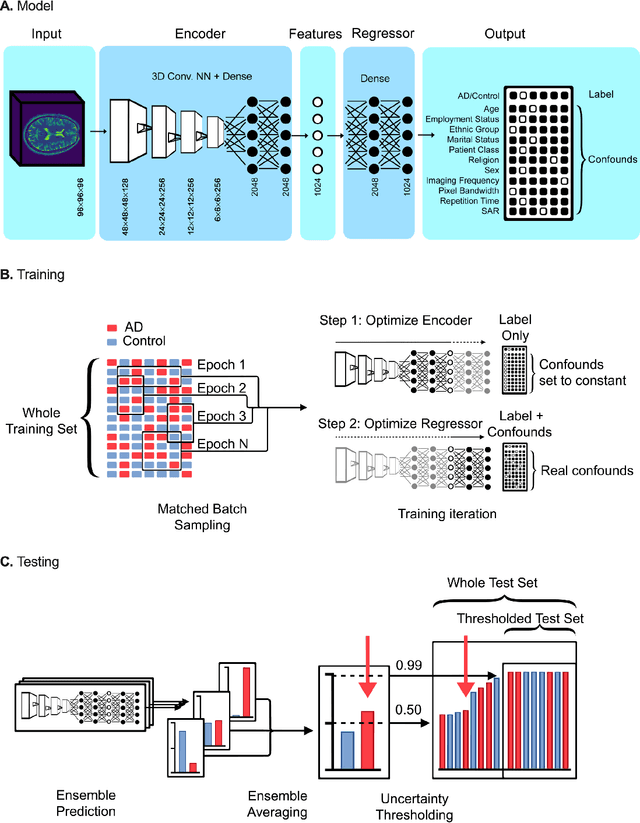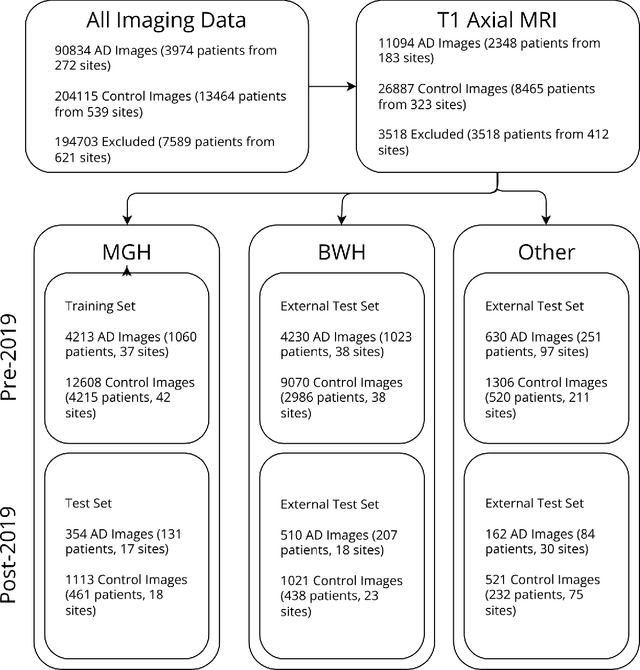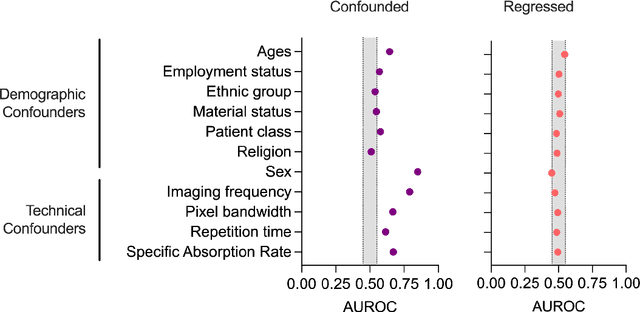Hyungsoon Im
Massachusetts General Hospital
Multi-confound regression adversarial network for deep learning-based diagnosis on highly heterogenous clinical data
May 05, 2022



Abstract:Automated disease detection in medical images using deep learning holds promise to improve the diagnostic ability of radiologists, but routinely collected clinical data frequently contains technical and demographic confounding factors that differ between hospitals, negatively affecting the robustness of diagnostic deep learning models. Thus, there is a critical need for deep learning models that can train on imbalanced datasets without overfitting to site-specific confounding factors. In this work, we developed a novel deep learning architecture, MUCRAN (Multi-Confound Regression Adversarial Network), to train a deep learning model on highly heterogeneous clinical data while regressing demographic and technical confounding factors. We trained MUCRAN using 16,821 clinical T1 Axial brain MRIs collected from Massachusetts General Hospital before 2019 and tested it using post-2019 data to distinguish Alzheimer's disease (AD) patients, identified using both prescriptions of AD drugs and ICD codes, from a non-medicated control group. In external validation tests using MRI data from other hospitals, the model showed a robust performance of over 90% accuracy on newly collected data. This work shows the feasibility of deep learning-based diagnosis in real-world clinical data.
Evolution Strategies Converges to Finite Differences
Dec 27, 2019Abstract:Since the debut of Evolution Strategies (ES) as a tool for Reinforcement Learning by Salimans et al. 2017, there has been interest in determining the exact relationship between the Evolution Strategies gradient and the gradient of a similar class of algorithms, Finite Differences (FD).(Zhang et al. 2017, Lehman et al. 2018) Several investigations into the subject have been performed, investigating the formal motivational differences(Lehman et al. 2018) between ES and FD, as well as the differences in a standard benchmark problem in Machine Learning, the MNIST classification problem(Zhang et al. 2017). This paper proves that while the gradients are different, they converge as the dimension of the vector under optimization increases.
 Add to Chrome
Add to Chrome Add to Firefox
Add to Firefox Add to Edge
Add to Edge